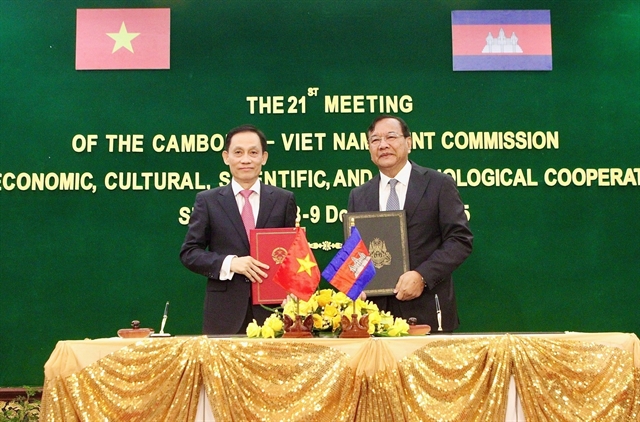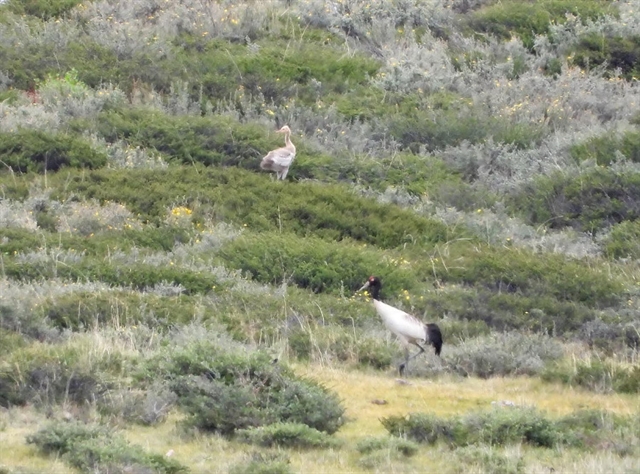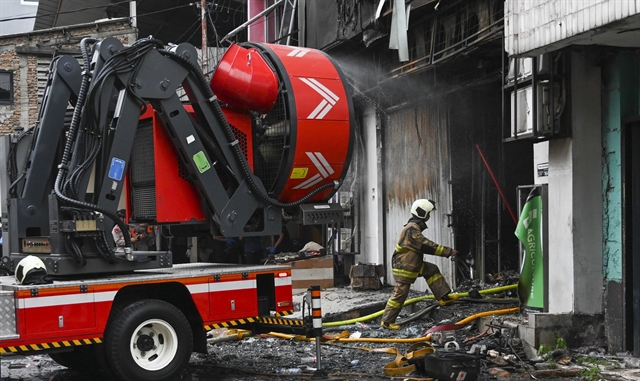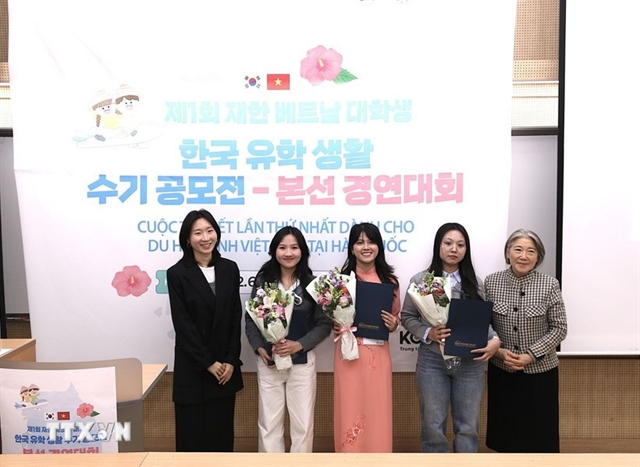 Life & Style
Life & Style
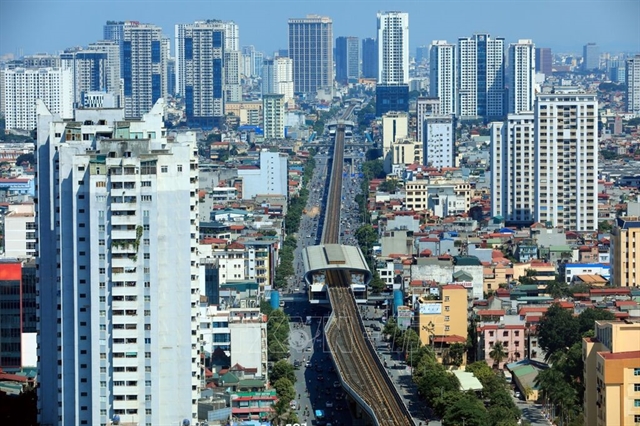
An exhibition, with the theme of Vietnamese Sacred Animals showcasing over 200 images and objects, has opened in Hà Nội, as part of activities to mark the Việt Nam Cultural Heritage Day (November 23).
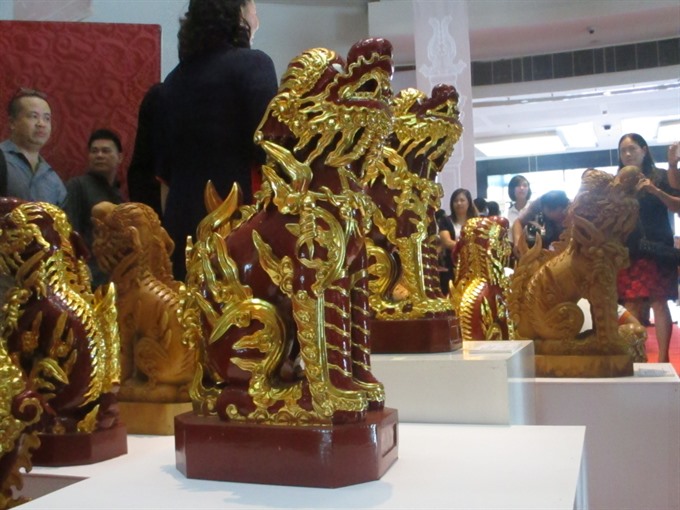 |
| Nghê, a sacred animal created by artisan Nguyễn Giang from Thạch Thất District. — VNS Photo Minh Thu |
HÀ NỘI — At many of the pagodas, temples or other instances of spiritual architecture in Việt Nam, statues of sacred animals almost always guard the gate. An exhibition honouring those statues--themed Vietnamese Sacred Animals - is showcasing over 200 images and objects in Hà Nội to mark the Việt Nam Cultural Heritage Day (November 23).
These statues are made from various materials such as stone, wood, terra cotta and bronze. They all express the skill of Vietnamese artisans and the quintessence of traditional fine arts, said art researcher Trần Hậu Yên Thế.
The exhibit showcases various sacred animals like dragons, phoenixes, unicorns, lions, horses, elephants and various objects provided by the Hà Nội Museum and private collectors.
Some sacred animals were created by Vietnamese artisans, while others were formed through interactions with foreign cultures. Each sacred animal reflects Vietnamese traditional culture and characteristics.
The exhibition aims to preserve artistic and cultural values and help locals to better understand Vietnamese sacred animals, contributing to awareness in preserving, inheriting and promoting the national cultural identity.
“Ancient people believed that sacred animals were the embodiment of natural phenomena, mysterious forces, or supernatural powers that could influence human life and the universe,” said Thế.
Last year, the Ministry of Culture, Sports and Tourism released a regulation that bans foreign-style symbols, sculptures and worship objects unsuitable for Vietnamese culture. In the past 20 years, together with open-door policy, many foreign-style symbols, products and animal sculptures have been widely-spread throughout the country, distorting traditional spiritual images.
“Foreign animals were described with sharp nails, big claws and the fierce look, meanwhile Vietnamese sacred animals look more tolerant,” said Thế.
The ministry has organised many mobilisations, competitions and training courses for artisans to encourage them to create sacred animals statues which bear traditional style, instead of imitating Chinese or European statues.
Painter Vũ Huy Thiều said the exhibition provided visitors a multi-faceted perspective on Vietnamese sacred animals. Besides the artefacts collected from archaeological sites and vestiges, the exhibition also displays sacred animals statues produced recently by artisans Nguyễn Giang and Trần Thanh Tùng.
“The wooden statues by Giang and Tùng are very beautiful and suitable to be displayed at Vietnamese vestiges and spiritual places because the artisans have consulted researchers and documents about traditional sacred animals,” said Thiều.
The exhibition runs until the end of this month at the Hà Nội Museum, Phạm Hùng Street, Hà Nội. To mark the Vietnam Cultural Heritage Day, folk arts performances, and water puppetry shows will also be organised at the site. — VNS
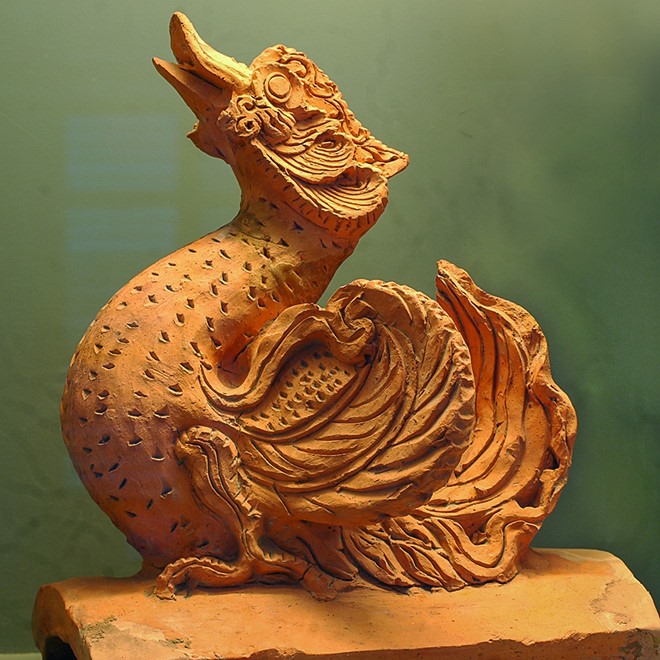 |
| Uyên ương (a sacred bird) found at Thăng Long Royal Citadel relics. — VNS Photo Minh Thu |

